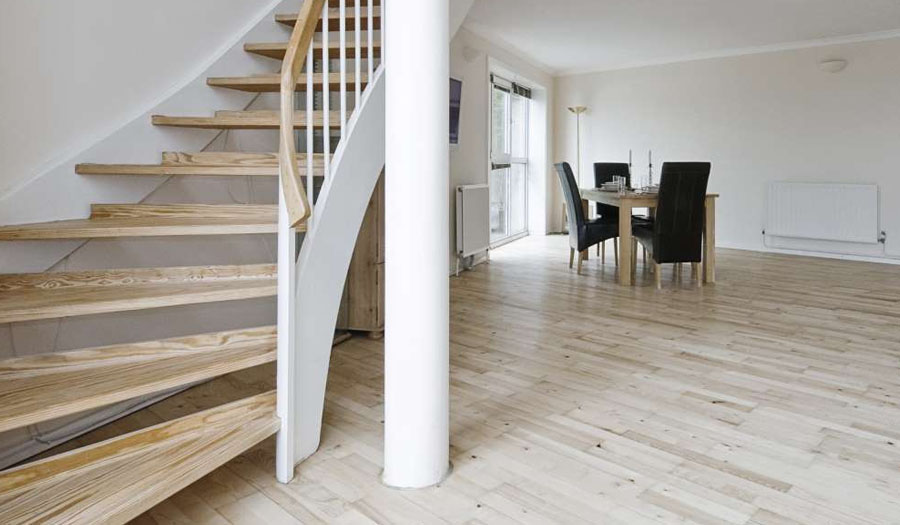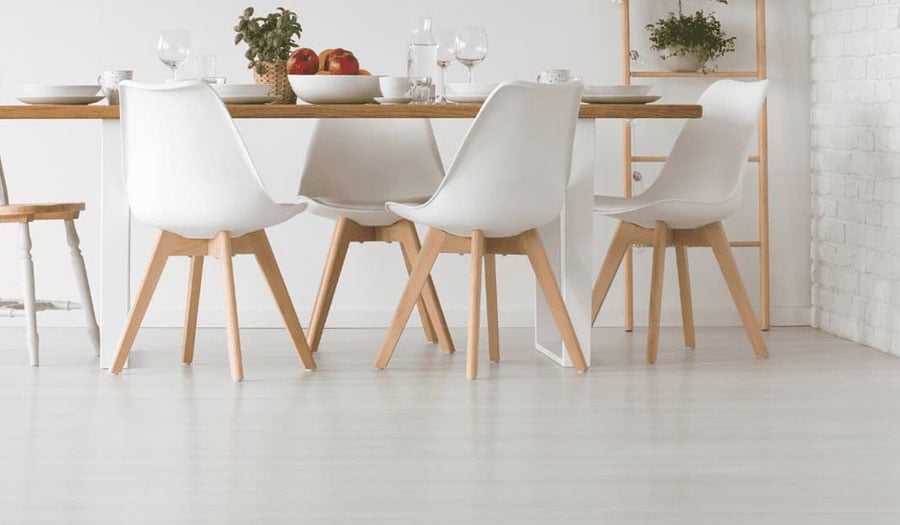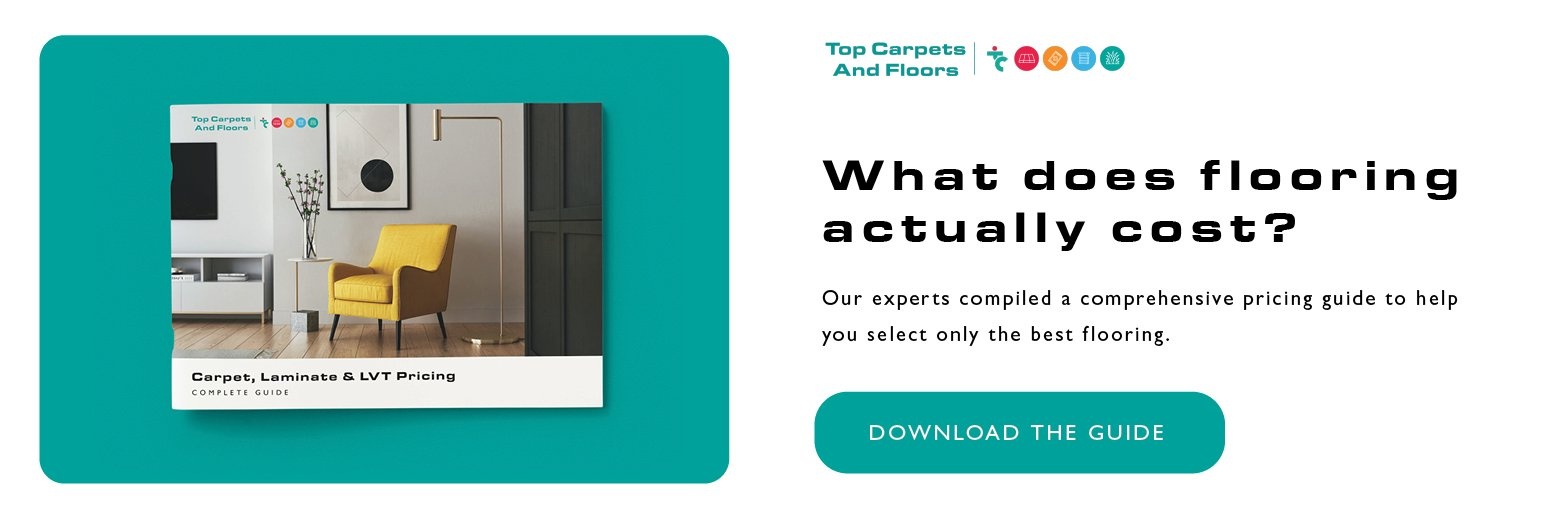
Which Flooring Is Best for My House? 10 Things You Need to Consider
A worn-out floor surface looks ugly and reduces your property’s value. Also, it reduces the enjoyment of the space. In addition, it poses a health and safety risk. But replacing the surface can be an expensive endeavour. Careful consideration must go into the choice of flooring. What works well in one room, doesn’t necessarily cut the grade in another. Many factors come into play, making it difficult to choose the flooring that is best for your house.
To help with the decision-making process, we list the 10 things you need to consider and give an overview of key questions regarding the flooring options for each room.
10 Things You Need to Consider
Why not just choose a flooring solution based on how it looks or what it costs? For one, some types of flooring cannot work in high moisture and spill-risk areas such as kitchens or bathrooms. Hardwood flooring is amazing in appearance, but is noisy, expensive, and not suited for kitchens or bathrooms. An alternative to solid wood flooring is wood laminates or luxury vinyl planks. Both are cheaper and work better in moisture-rich rooms. From this explanation, you can see why specific factors must be considered to answer the question of “Which flooring is the best for my house?” These are the factors to consider:
- How much traffic does the room get?
- Will it be used by senior people, children or pets?
- What maintenance is required?
- Will the floor be exposed to spills, water and moisture?
- How important is soft underfoot for me?
- What is the product and installation cost per square metre?
- Can I replace a damaged section without having to replace the flooring in the entire room?
- Will the floor be exposed to direct sunlight?
- Can it weather heavy furniture placement?
- What is the lifetime of the product?
So, Which Flooring Is Best for My Home?
You need to answer or review the questions for each type of flooring and the room in your house where it will be used. To make the process easier, let’s consider room-by-room requirements. Here’s a video that identifies key factors for choosing the flooring that is best for your home.
Best for The Kitchen
The kitchen is a high-traffic area where spills are bound to be part of life. From water to oil and fat spills can be expected. The moisture content may at times be high. You will want a solution that is easy to clean, doesn’t have openings for debris and hair collection, and can handle high foot traffic. Soft underfoot is less of an issue, but hygiene, slip resistance, water resistance, and the ability to carry traffic will be important.
You want a hard-wearing surface as the floor will get its fair share of usage. The surface must not dent easily and must have a high level of scratch resistance.
These factors put carpets at the bottom of the list of suitable floors. Porcelain tiles have always been popular because of their scratch resistance and long lifetime. But modern luxury vinyl tiles, rigid board and wood laminates have made great strides in recent years as popular flooring options for kitchens. Here’s why:
- Affordability – more affordable than ceramic and porcelain tiles.
- Scratch resistance – the protective upper layer of vinyl and laminates protect against scratches.
- Easy to clean – simply dry wipe, vacuum or damp clean to remove dirt and spills.
- No spaces between the planks or tiles for debris build-up and thus hygienic.
- Long lifetime with many vinyl and laminate floors having warranties that extend to 15 years.
- High level of slip resistance – some vinyl and laminate floors are slip-resistant.
- No grout lines to clean.
Luxury vinyl tiles are better suited for the kitchen because the products don’t have wood cores such as with wood laminates. The vinyl is water-resistant from the top and the bottom. View the extensive range of luxury vinyl tiles available.
Best for The Bathrooms
The bathroom is a high moisture area. Water on the surface is a given as few people can manage to get out of a bath without spilling a single drop of water. Ceramic and porcelain tiles work well, but the grout spaces collect dirt and moisture. Luxury vinyl and some of the rigid board types work best in this high moisture environment where slip resistance is also important. Have a look at these rigid boards and luxury vinyl tiles that work in bathroom settings.
Best for The Bedrooms
The bedroom is a place of comfort. You will want warm underfoot, sound cushioning and style. The choice depends on your interior design preferences, but carpets are still at the top of the ladder for bedrooms. This is because carpets and rugs are warm, provide noise cushioning and can be kept clean through regular vacuum and once in a while deep steam cleaning. The underlay, pile density and texture affect the comfort level and ability to handle traffic. Bedrooms don’t have high levels of moisture and are often sunny areas in the house. With Healthy Living Installations you can prevent microbes and allergens from causing health problems when you install carpets in the rooms.

Best for The Living and Dining Room Areas
Noise emission is often an issue with wood laminates, engineered wood and hardwood flooring. With wood laminates and luxury vinyl tiles, it is possible to minimise noise emission through the correct underlay. Thicker types of wood laminates can handle tremendous traffic and are exceptionally hard-wearing. These floor solutions can handle heavy furniture and have good dent resistance. Luxury vinyl tiles, carpets, and wood laminates all work for the living and dining room areas. See the extensive range of wood laminates here.
Final Thoughts
If you have considered the key factors for each room, you already have an idea of which floor solutions will work.
We know it can still be a bit complicated and want to make the decision-making process even easier. To this end, we provide you with a comprehensive pricing guide, click the button below 👇 to get your copy now.


